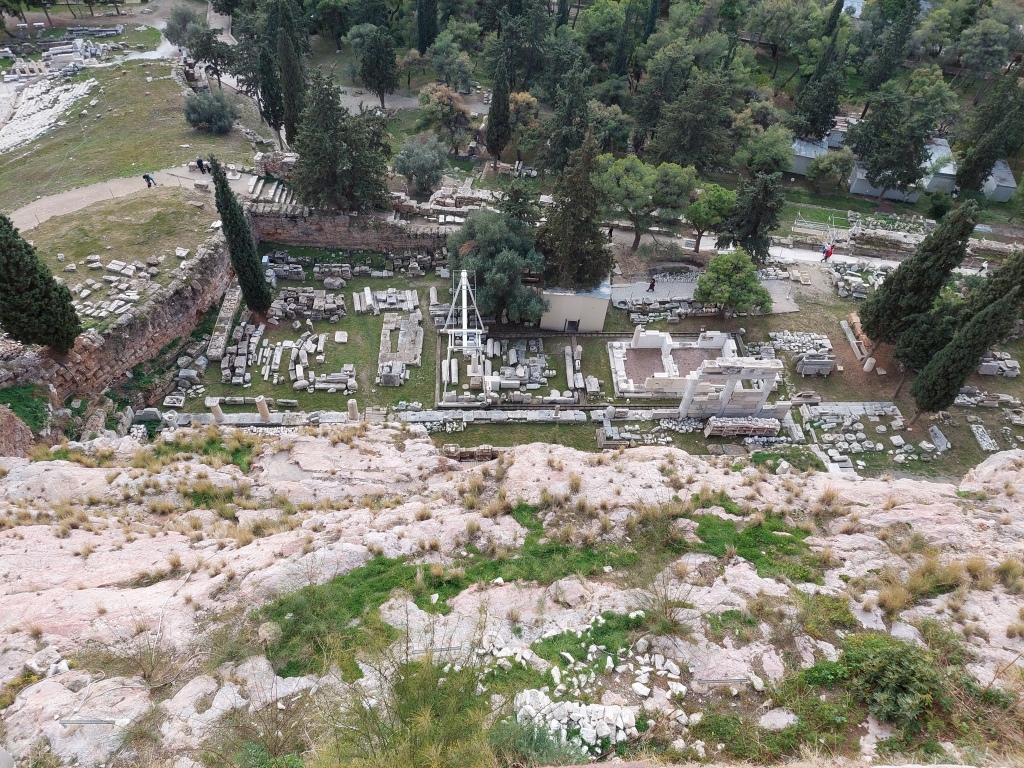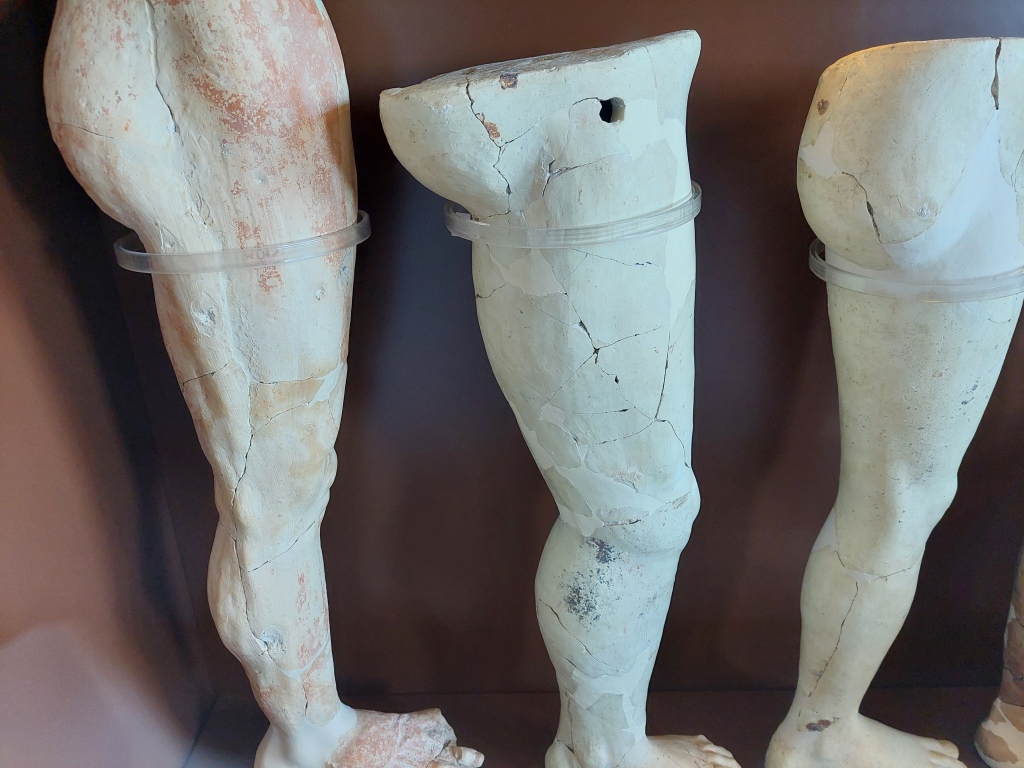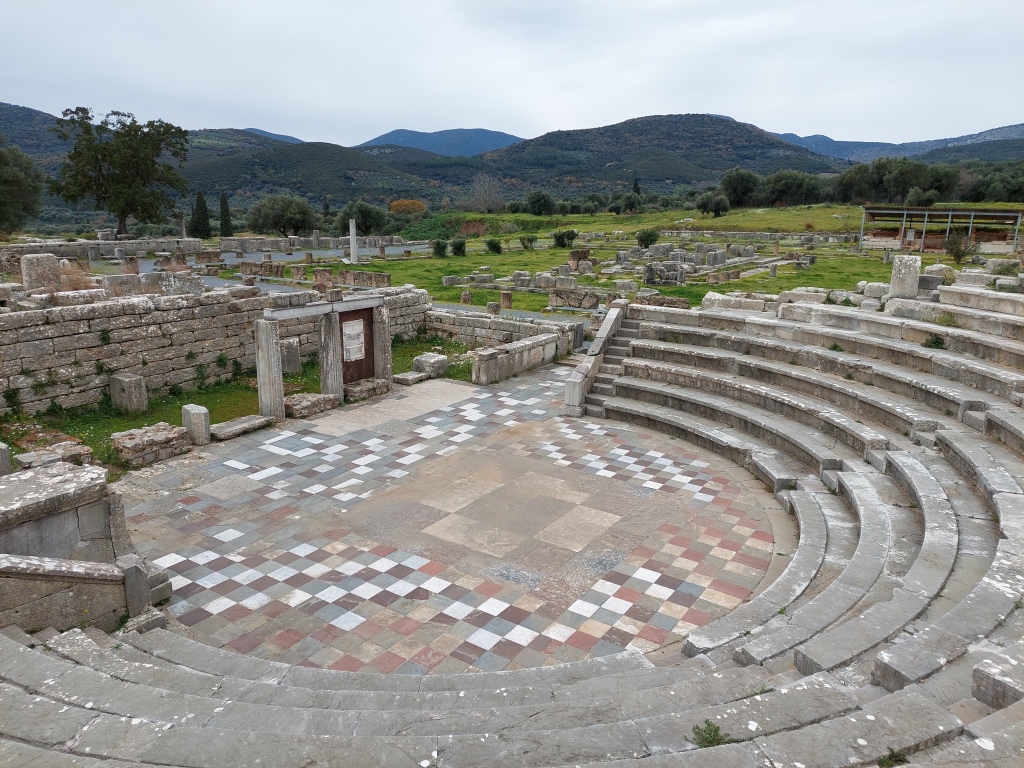This is my first time in Athens. Up to this moment my acquittance with Athens was through books and lectures, focusing on mainly the ancient civilization: the start of philosophy, Greek myth, religious cults and practices. At Athens many research institutes are located, each housing a majestic collection of books and reference works where I could find all the books I had on my list to consult for my topic of interest. The libraries are easily reachable by the public transport (I personally love the efficiency of the metro that gets you from a to b in a matter of minutes), but everything is also on walking distance. Now I am able to place my footsteps in this mighty city full of history and rich in culture.
I came to Athens to consult the libraries connected to the several institutes stationed here. I am currently writing my master thesis on the topic of the concept of ‘fate’ that is connected to the Egyptian goddess Isis presented in certain aretalogies dedicated to her which are found both in Egypt and Greece. While I am here, the plan was to, by archival research, investigate the several Greek sites that I have found where the Isis aretalogies were discovered: Andros, Maroneia, Kyme, Thessaloniki, Ios and Telmessos. After my first week of being here and visiting the British Institute and the École français d’Athènes, I discovered yet another location that I can add to my list: Kassandreia, here another aretalogies in honor of Isis was found. Archaeological reports provided me with the actual inscriptions, photographs or squeezes from these aretalogies in addition to a description of the context in which these texts were found. In these Greek inscriptions I searched for the phrases in which Isis was being described as ‘being victorious over fate’. The fact that Isis is featured in these Greek texts ties into the topic of the development of Isis setting foot outside Egyptian borders and being included into the Greek religious system where especially during the Hellenistic period a cult for Isis was established. More about my research can be read in the journal of Pharos for which I am writing an article on my research conducted here at Athens.
Exploring the neighborhood on foot
My first two weeks I stayed at the Finnish Insitute in the Gizi district. From here it is very easy to walk into the city, following the Ippokratous str. leading you right to the Ακαδημία Αθηνών. This is also close to the French Institute (École française d’Athènes), and then passing Syntagma square, maneuvering your way through all these streets, I discovered on my first day a serene place, where I bought a χυμός πορτοκάλι (orange juice) and had a view on a Byzantine style church and on my right hand I looked up to the back of the Acropolis.
I noticed that the streets are flanked with these orange trees. Also, outside the NIA the street is filled with the colors of green leaves and orange fruits hanging over the parked cars. They are citrus auratium, νεράντζια in Greek, and when I asked the librarian of the NIA about these fruits, she explained to me that they are rather bitter and that you can find them in certain ταβέρνες where they are usually prepared with a syrup and eaten with yoghurt.

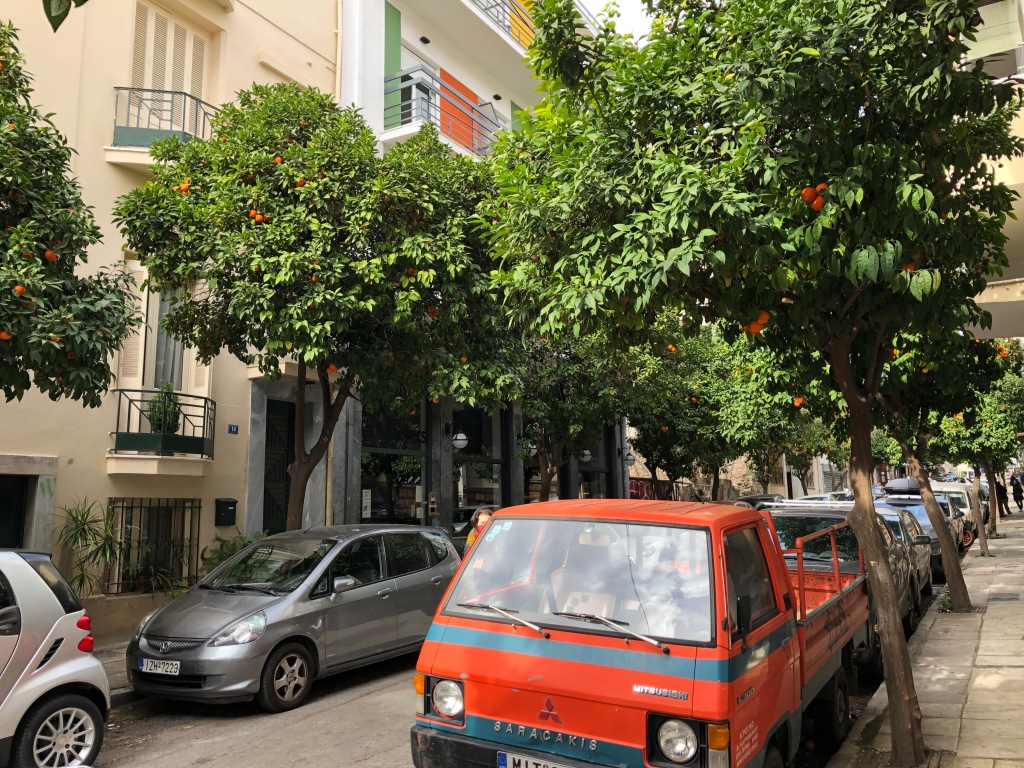
Photographs taken from the office and a view of outside the NIA on the Makri street.
With these pictures below I would like to illustrate the hilliness I encountered during my walks. They are taken from the Asklipiou str. the first facing towards the Lycabettus hill, the second facing in opposite direction.
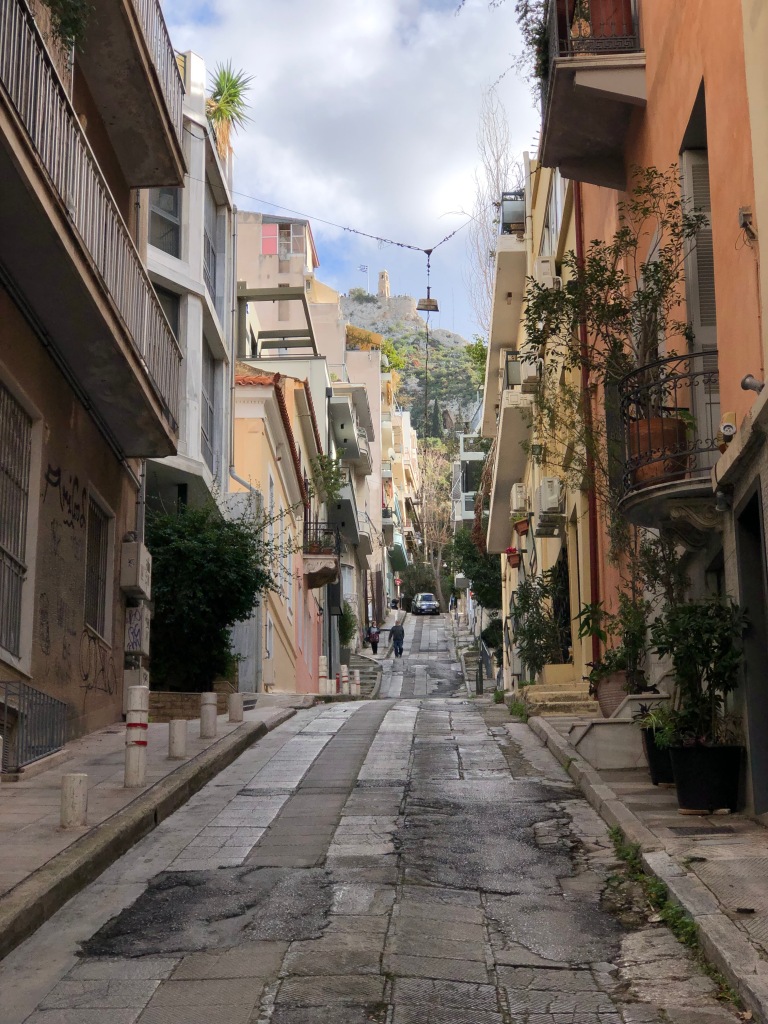

Photograph of a hilly road towards the city center
Visiting the institutes



The libraries of the: École française d’Athènes (Room B); British School at Athens; Nordic Library
Consulting the libraries of the institutes was the main goal of my trip to Athens. The process of accessing those libraries was similar for all of them. Make sure you have a pass photo with you, you might also need to show a proof of being a student, but most importantly a reference letter is what will open the doors for you. After registration I got a tour through all the libraries and it was inspiring to have a different place to study, this change of surroundings was what helped me work in an efficient way when consulting the books and stimulated me to write down my course of thought as I was reading in a mind-unlocking-way.
The themes of books I searched for were first mainly archaeological and based on the sites where these aretalogies were excavated, so older reports dating back to the 19-somethings. Especially the EFA, the Archaeological Society at Athens and the German Institute provided me with the most journals and periodicals pertaining to the excavation histories. The collection of the EFA also contains many titles on the Isiac aretalogies: textual analyses and comparisons to the other aretalogies. For the topic of ancient religion, I consulted the BSA and the Nordic Library which offer the relevant titles I need for my investigation.
Moving from the FIA to the NIA
The first two weeks of my stay in Athens, the Koroneos building of the Finnish Institute (FIA) was my home. It was located a bit further away from the city center but that way I felt like living among Greeks; I made a friend at the local bakery across the street. Here I went for a bougatsa or loukoumas as a treat after a day of studying and he would always add something extra: pain au chocolats or pizza breads. Apparently, I looked like I could use some food or a sugar boost. In the supermarket and at this small pita gyros restaurant they already knew me and every time when I tried to order in Greek, I learned another Greek word, so that in the end I would know what they were asking and could respond accordingly. It was a very friendly and cozy area with everything you need right there.
Then I moved to the NIA which is quite the opposite in terms of tranquility as it was at the Koroneos; it is in the heart of the city center, right at the slopes of the Akropolis hill. I still cannot believe this beautiful location right at my doorstep. Here, life is very lively and vibrant; restaurants, tourists shops, nut-stands and lots of doves surround you when going outside. At this point most of my investigation was finished so I made great use of my new location and used most of my afternoons exploring the city like a tourist; visiting museums and the city’s archaeological sites.
Now that I have collected all of my data I needed, I worked mostly from the common room at the NIA, which has come to feel like home. It is the perfect combination of peace and quiet to study and still have the ability to have a chat every now and then with the staff or other roommates (just two others, of which one left last Sunday). In the evenings this roommate and I cook dinner together and discuss our day, our research, our experiences. This is a nice way to learn from other students and be inspired or stimulated pursuing certain career goals.


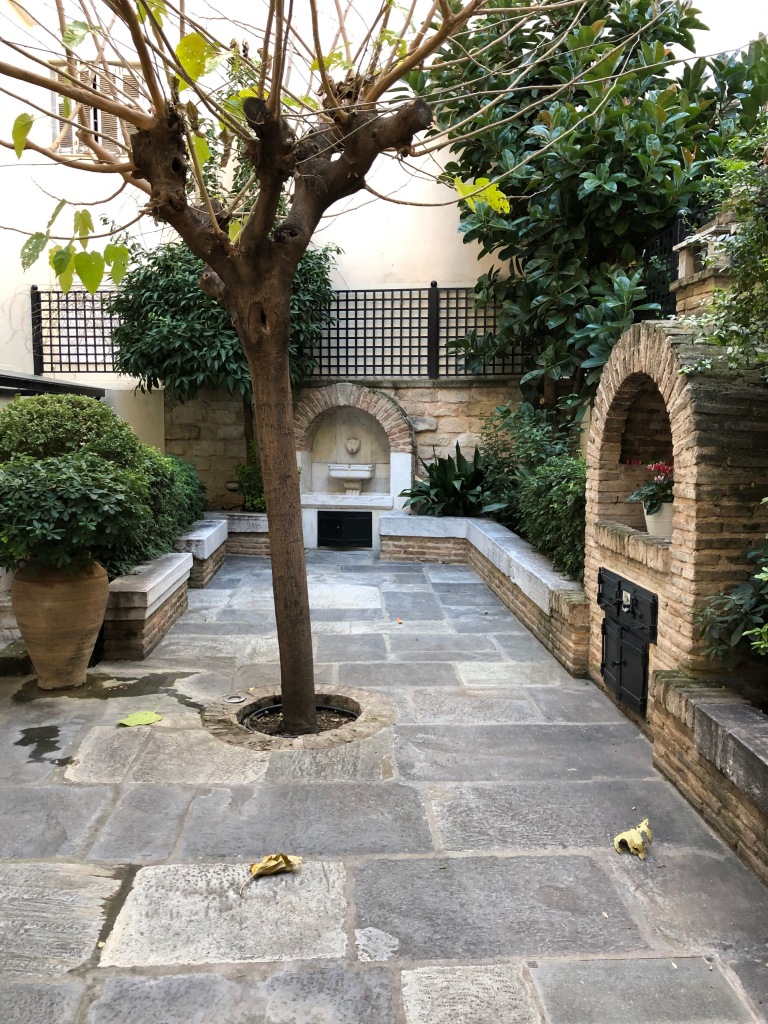
My room for the past two weeks; Starting my morning with a cup of τσάι του βουνού; Τhe garden
Last but not least…
I would like to conclude this blog with a word of thanks for the entire staff and the institute. I feel blessed being given this opportunity to work from the NIA, from Athens, this has really stimulated my research and it has gifted me the daily-life experience of living in Athens. It has been a very fruitful and successful stay where I was enabled by all the staff of the NIA, Emmy who was able to find accommodation for me on such short notice, and Ann who inspired me to come to the NIA in the first place and who made sure I had a smooth access to all these beautiful libraries, all have brought my investigation to a deeper level. Thank you for making my stay a very scholarly experience on which I will always look back to with a smile. And hopefully see you soon again.
By Robin Erica Linda Fitas
ΜA Egyptology
Leiden University
NIA Scholarship



